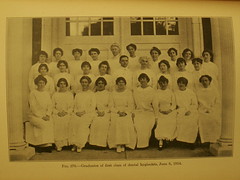Patient after patient, hour after hour, day after day hygienists can be heard delivering oral hygiene instruction (OHI) to their patients. This task has the ability to become mundane. So mundane that other team members can repeat this conversation verbatim. Hygienists go into autopilot during the time allowed for OHI.

Image by rosefirerising via Flickr
This portion of the visit can become so boring for the hygienist that many even skip this important step.
The psychological world has devoted much time and energy attempting to understand how people learn. Hygienists are educated during their formal education years about several learning styles, but typically, this education is not transferred into the clinical arena.
Understanding how each patient is motivated is necessary in order to make a change. There is the idea of avoidance and approach to motivation. Knowing if a patient prefers one of these over the other will assist in an effective delivery of OHI.
Avoidance motivates a person who likes to choose to do one thing to avoid another. In this situation, maybe a patient would avoid sugar in order to avoid decay. The approach method differs in that the person would actually do something to reach the desired goal.
For instance, an approach motivated patient would probably engage in brushing more often in order to remove sugars from his or her teeth, realizing this behavior will reduce the incidence of decay.
Another theory centers around goals and rewards. The reward theory states people repeat behaviors that make them feel good (positive reinforcement). In contrast, the goal theory is thought to create tension and people work hard to reduce the tension.

Image by rosefirerising via Flickr
In the dental office, patients who are motivated by rewards will perform a task in order to feel good and receive positive reinforcement from the hygienist.
A goal-motivated patient would do well if the hygienist developed an actual program in which a patient needed to accomplish the task every day for a designated amount of time. Actually putting this program into action and reaching the goal would motivate this type of person.
Yet another theory centers around the patients’ needs. This theory states that people can be categorized into one of seven areas based upon which needs are currently being met.
At the bottom of the pyramid are physiological and safety needs. People who are not having these needs met will not be able to engage in behaviors that do not address these needs.
Spending time exploring, understanding and applying motivational theories certainly will assist the dental hygienist to understand how to motivate patients to improve oral health. Similarly, talking with patients and determining what motivates them will cure the boring nature of OHI.













